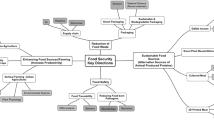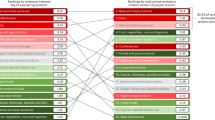Abstract
MANY nitrosamines are carcinogenic1 and can be formed by the interaction of nitrite with primary2, secondary3 or tertiary amines4, or even quaternary ammonium salts5. Foods contain many amines, and in cured meats sodium nitrite provides the other precursor for the potential formation of nitrosamines. Some strains of bacteria reduce nitrate to nitrite, so that nitrate in conjunction with the appropriate amine could also lead to nitrosamine formation6. There have been several studies in which cured meats and a few other foods have been examined for nitrosamines, although most of these have been restricted to the detection of the volatile dialkyl and simple heterocyclic compounds7. Combined gas chromatography and mass spectrometry is the most reliable method, and has a typical detection limit of 1 µg per kg of food for volatile nitrosamines. More recently, the chemiluminescent detection of nitrosamines has enabled much lower concentrations to be measured8. We have carried out a survey of foods commonly encountered in the UK, using mass spectrometry9 and chemiluminescence, and we now summarise our data to assess the intake of volatile nitrosamines from these foods.
This is a preview of subscription content, access via your institution
Access options
Subscribe to this journal
Receive 51 print issues and online access
$199.00 per year
only $3.90 per issue
Buy this article
- Purchase on Springer Link
- Instant access to full article PDF
Prices may be subject to local taxes which are calculated during checkout
Similar content being viewed by others
References
Magee, P. N. & Barnes, J. M. Br. J. Cancer 10, 114–122 (1956).
Warthesen, J. J., Scanlan, R. A., Bills, D. D. & Libbey, L. M. J. Agric. Fd Chem. 23, 898–902 (1975).
Mirvish, S. S. J. natn. Cancer Inst. 44, 633–639 (1970).
Smith, P. A. S. & Loeppky, R. N. J. Am. chem. Soc. 89, 1147–1157 (1967).
Fiddler, W., Pensabene, J. W., Doerr, R. C. & Wasserman, A. E. Nature 236, 307 (1972).
Coloe, P. J. & Hayward, N. J. J. med. Microbiol. 9, 211–223 (1976).
Scanlan, R. A. CRC Critical Reviews in Food Technology 5, 357–402 (1975).
Fine, D. H., Rufeh, F., Lieb, D. & Rounbehler, D. P. Analyt. Chem. 47, 1188–1190 (1975).
Gough, T. A., McPhail, M. F., Webb, K. S., Wood, B. J. & Coleman, R. F. J. Sci. Fd Agric. 28, 345–351 (1977).
Goodhead, K. & Gough, T. A. Fd Cosmet. Toxicol. 13, 307–312 (1975).
Gough, T. A. & Webb, K. S. J. Chromat. 79, 57–63 (1973).
Gough, T. A., Goodhead, K. & Walters, C. L. J. Sci. Fd Agric. 27, 181–185 (1976).
Household Food Consumption and Expenditure for 1973 (HMSO, London, 1974)
Author information
Authors and Affiliations
Rights and permissions
About this article
Cite this article
GOUGH, T., WEBB, K. & COLEMAN, R. Estimate of the volatile nitrosamine content of UK food. Nature 272, 161–163 (1978). https://doi.org/10.1038/272161a0
Received:
Accepted:
Issue Date:
DOI: https://doi.org/10.1038/272161a0
Comments
By submitting a comment you agree to abide by our Terms and Community Guidelines. If you find something abusive or that does not comply with our terms or guidelines please flag it as inappropriate.



